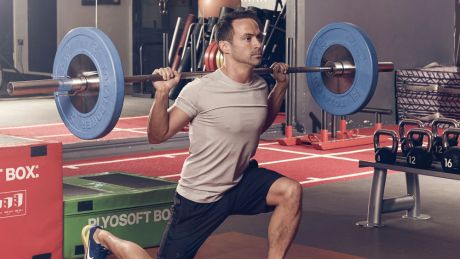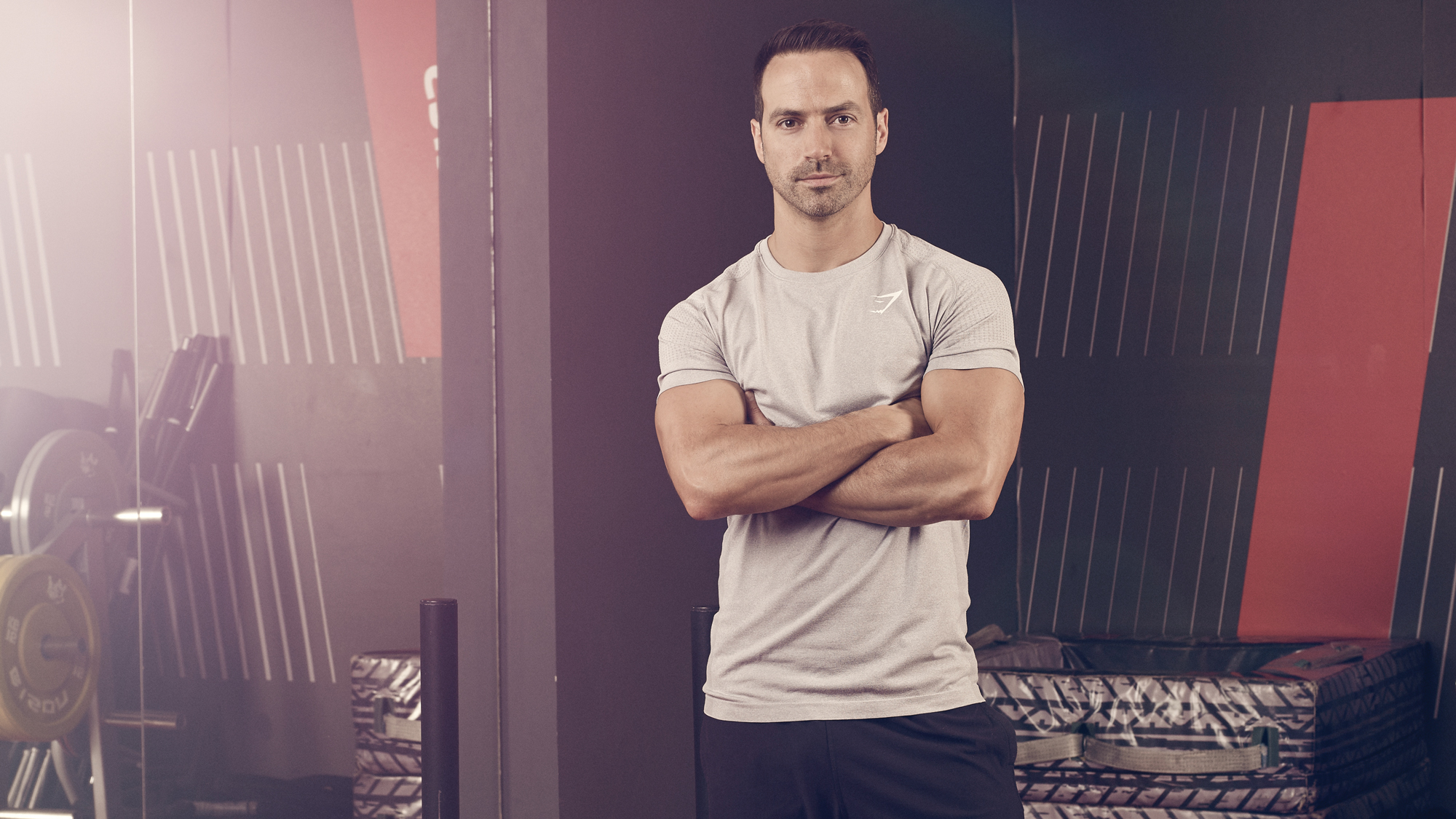How To Lift Weights More Effectively And Get More Out Of Your Workouts
Use these simple technique tips to get more out of every rep

Earlier this year I completed an eight-week body transformation that saw me go from overweight 37-year-old to becoming a cover model. I used the New Body Plan, and if you follow it then I’m confident that you’ll experience a similarly dramatic change to the way you look and feel.
There is, however, one extra element that will determine the outcome of your efforts. You see, it’s not just the exercises you perform that count – it’s the way that you perform them that will have the biggest impact on the result you achieve. To ensure that you get the results you’re looking for, try to implement the following 16 tips every time you train. It may take a bit of adjustment at the start, and you may also find that you end up lifting less than expected – but, funnily enough, that’s probably a sign that you’re lifting properly.
1. Have a plan
If you walk into the gym without knowing exactly what you want to achieve from the session then there’s no chance whatsoever that you’ll have a productive workout. At best you’ll crank out a few biceps curls before wandering around for a quarter of an hour and then hitting the shower. Make sure you’ve got a workout programme to follow – you won’t waste your training time and you’ll achieve your goals faster.
2. Use mental cues
Your overall goal should be to perform every rep as well as you can. One way of helping yourself get focused before the start of a set is to use a verbal or physical cue to tell your brain, “right, time to go to work”. You could say the word “strong” to yourself. Or you could quickly tense your muscles. See what works for you.
3. Create a pre-set routine
To take that idea a step further, you could create a pre-set routine. This might involve something along the lines of purposefully planting your feet, taking three deep breaths and visualising the first rep before you get the weights in place. You’ll find that this will have a positive impact on your session.
4. Turn up the volume
Training to your favourite music is the quickest and easiest way to ramp up your results, so put together a playlist of your top tunes – ideally those that get your head nodding and feet tapping. Multiple studies have found that music lowers the rate of perceived exertion (or RPE), which in essence means hard exercise feels easier than it would without your own session soundtrack.
5. Plant your feet
At the start of a set it’s well worth pressing your feet into the ground because it will fire up the muscles of your legs, glutes and core to help create a solid and stable base. Get an even stronger foundation by imagining you’re screwing your heels down to get all those small but crucial stabilising muscles fully activated.
Get the Coach Newsletter
Sign up for workout ideas, training advice, reviews of the latest gear and more.
6. Set up to be stable
Before you lift, always brace your core by taking a breath and contracting your abs. It also makes sense to recruit your glutes to give your entire body more stability and make it more able to perform the lift.
7. Think about the muscle
This is another old-school bodybuilder technique. You’ve probably heard of the mind-muscle connection, and it’s real – studies have shown that thinking about the muscle you’re trying to target will have a positive impact on the effectiveness of your session.
8. Squeeze the antagonist muscle
The antagonist muscle is the one on the opposite side to the target muscle. So, if you’re training your biceps (the front of your upper arms), the antagonist is the triceps (the back of your upper arms). Before you start each rep, squeeze the antagonist muscle to ensure you use a full range of motion and also send the right signals from brain to muscle to maximise muscle fibre recruitment.
9. Squeeze the bar
Squeezing the weight before you lift will send a signal to your brain to recruit muscle fibres and help you move the load. It will also help to get your mind focused so you can put maximum effort into the exercise.
10. Make the first rep count
You will always be comparatively fresh at the start of each set, so it’s easy to switch off for the first couple of reps. Remember, the way you perform the first rep will determine the quality of your set.
See related
- Here’s How This Man Lost 10Kg Of Fat in Eight Weeks
- The Weight-Loss Workouts Which Helped This Man Shed 2.5kg Of Fat In Two Weeks
- Diet Tips From The Man Who Lost 10kg Of Fat In Eight Weeks
11. Squeeze the target muscle
You may not end up looking like a bodybuilder but you can borrow some of the big guys’ techniques. At the top of each rep, squeeze the target muscle so that you feel it properly contract. The better the contraction, the better the outcome.
12. Control the eccentric
The eccentric (lowering) phase of a lift is important because it’s an opportunity to expose your muscle to stress in its strongest part of the lift. Take the bench press, for example: if you drop the bar to your chest rather than controlling the lowering phase of the lift, you’re missing out on a huge proportion of the exercise’s potential benefit.
13. Don’t use momentum
If you swing the weights around, you aren’t properly applying tension to the target muscle. And it’s the application of tension, rather than the number on the weight, that really matters. Using momentum might help to grow your ego but it won’t do much for your muscles.
14. Keep tension on the muscle
Rather than jolting your joints and locking out on every rep, aim to maintain tension in the muscle by keeping a softness in your joints, particularly during machine and isolation moves. For heavy compound lifts, such as deadlifts, squats and bench presses, it is safer to lock out each rep.
15. Get your breathing sorted
Breathing properly will ensure that you are strong and stable in the key parts of a rep. Take a breath before you do a rep and exhale as you complete the rep, then take another breath and repeat the cycle.
16. Make every rep look the same
Each and every rep should take roughly the same time, and you should always be in control of the weight. The exception is the final couple of reps of each set, which you may have to fight for.
Jon Lipsey worked for Men’s Fitness UK, which predated, and then shared a website with, Coach. Jon was deputy editor and editor from 2007 to 2013. He returned as editor-in-chief from 2016 to 2019. He also co-founded IronLife Media and the New Body Plan.

